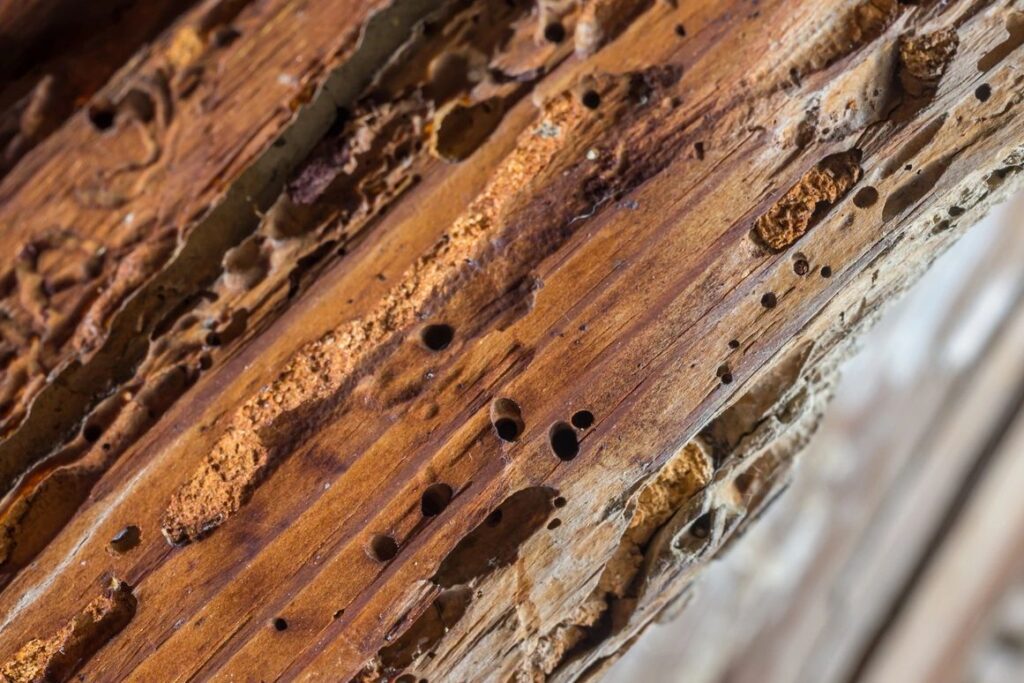Termites are a homeowner’s worst nightmare, silently devouring their way through wooden structures and causing substantial damage before they’re even detected. In Maricopa, Arizona, where the warm climate provides an ideal breeding ground for these destructive pests, it’s crucial to be proactive in identifying a potential termite infestation. In this blog post, we will guide you through key indicators that can help you determine if your Maricopa home is under attack by these silent invaders.

- Keep an Eye on Wood Damage: Termites primarily feed on wood, leaving telltale signs of their presence. Inspect both interior and exterior wooden structures such as floors, walls, door frames, and wooden furniture for any noticeable damage. Look for hollowed or sagging wood, buckling paint or wallpaper, or maze-like patterns etched into the surface. Damaged wood may also produce a hollow sound when tapped.
- Mud Tubes and Shelter Tubes: Subterranean termites, the most common termite species in Arizona, build mud tubes to protect themselves from predators and maintain a moist environment. These tubes act as their highways, connecting their nests underground to sources of food, typically the wooden parts of your home. Regularly check for mud tubes on foundation walls, along exterior walls, or even inside crawl spaces. Break open a small section of the tube; if live termites scatter out, it confirms their presence.
- Swarming Termites: Termite swarms are a sign of a mature colony ready to expand. These swarms usually occur in the spring or early summer when reproductive termites take flight to mate and establish new colonies. If you notice discarded wings near windowsills, light fixtures, or on the ground, it could indicate that a termite swarm has recently occurred nearby. Swarming termites are attracted to light sources, so keep an eye out for them indoors as well.
- Frass (Termite Droppings): Termites create tunnels within wood and then push their excrement out of small openings. These tiny fecal pellets, known as frass, resemble coffee grounds or sawdust and are often found near termite-infested areas. Check for accumulations of frass around wooden structures, as this could indicate an active termite presence.
- Sagging Floors or Bubbling Paint: As termites feed on wooden floorboards or subflooring, they can cause structural damage, resulting in sagging or uneven floors. Similarly, the moisture produced by termite activity can cause paint or wallpaper to bubble or peel. Regularly inspect your floors and walls for these signs, paying special attention to areas near moisture sources like bathrooms or kitchens.
Early detection is crucial when dealing with a termite infestation in your Maricopa home. By keeping a vigilant eye on the signs discussed above, you can identify a termite problem before it spirals out of control, potentially saving yourself from extensive damage and costly repairs. Remember, if you suspect or confirm a termite infestation, it’s best to contact a professional pest control company experienced in termite eradication. The experts at Arizona Wild can conduct a thorough inspection and implement effective treatment options tailored to your specific situation. With prompt action, you can protect your home and keep these silent invaders at bay. Give us a call today if you suspect you may have termites!
